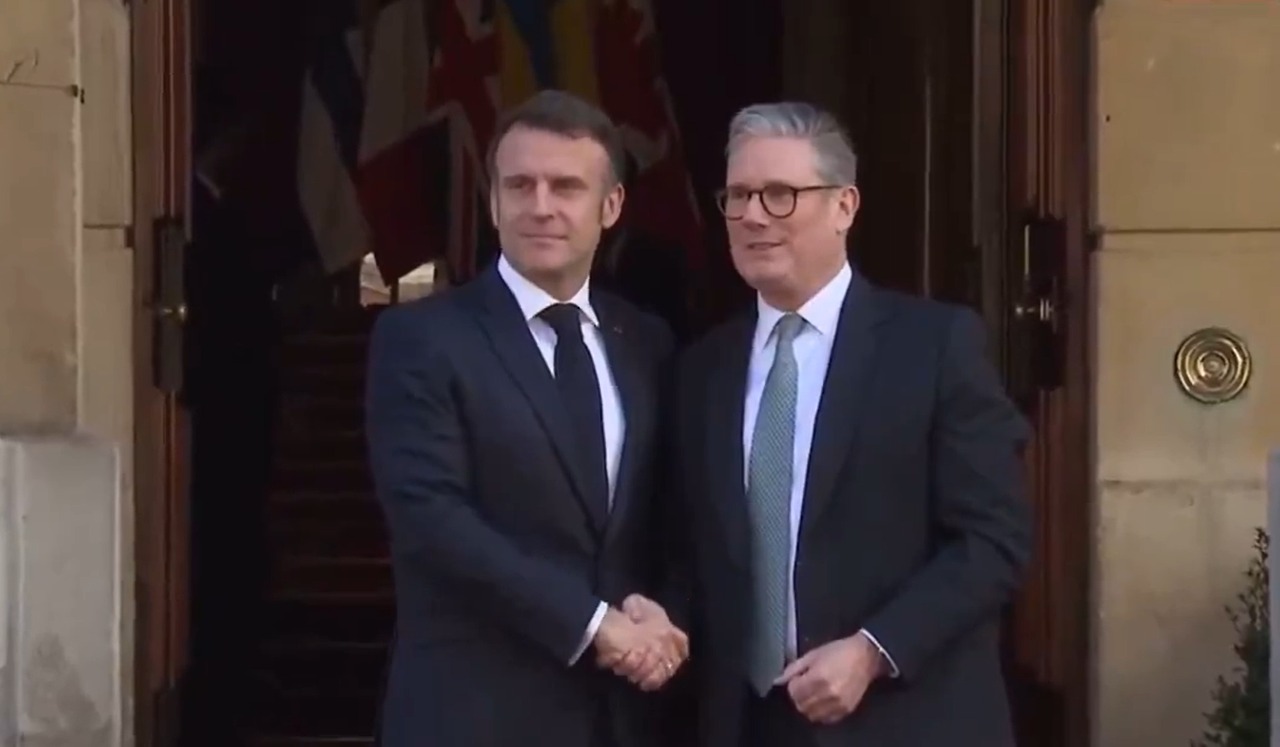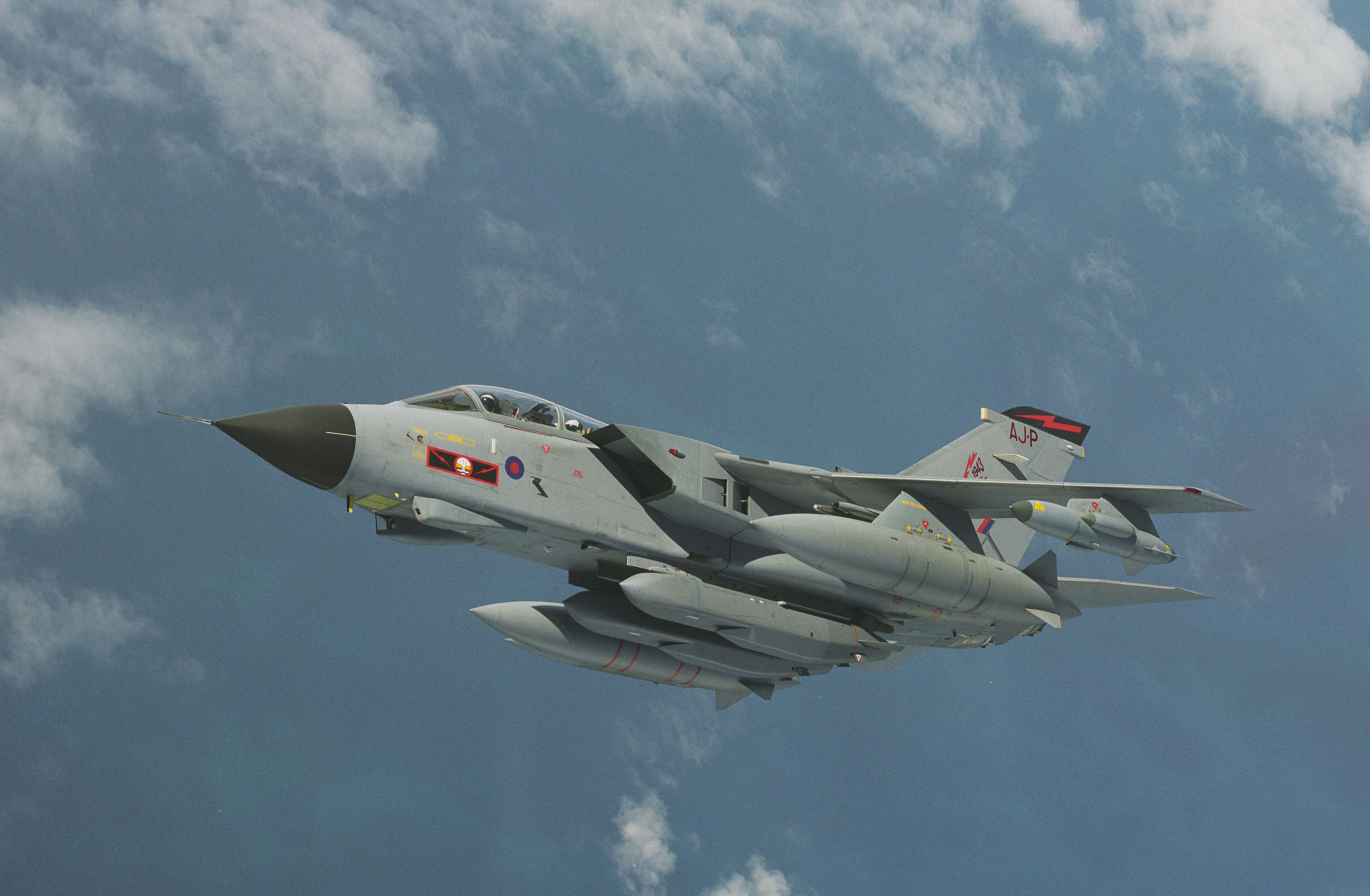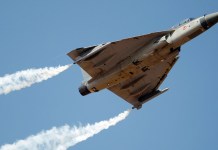Building on their decades-old cooperation, France and the United Kingdom committed to ordering more Storm Shadow/SCALP missiles and advancing work on the successor to this weapon on July 10.
This is part of a new, refreshed agreement signed between the two sides on the third day of French President Emmanuel Macron’s visit to Britain.
The Anglo-French air-launched cruise missile, called Storm Shadow by the UK and SCALP by France, has proved its lethality against Russian targets in Ukraine. The acquisition of more of these missiles by Paris and London purportedly signals their indispensability in air combat.
Moreover, stepping up work on the successor of this missile, which has been under consideration for nearly a decade, is noteworthy.
“The new agreement will see the UK and France commit to launch the next phase of their joint project for both deep strike and anti-ship missiles – a step closer to selecting a final design for Storm Shadow’s replacement,” the UK Ministry of Defense said in a statement.
In a nutshell, this new agreement under the “Lancaster House 2.0” framework strengthens industrial cooperation by calling for joint development of next-generation deep-strike and anti-ship missiles, upgrading existing Storm Shadow production lines, and the integration of Artificial Intelligence (AI) to enhance missile and drone lethality.
In addition, as the only nuclear powers in Europe, the two sides have also committed to deepening nuclear ties. They stressed that while their nuclear deterrents are independent, they can be coordinated to deter security threats from adversaries.

French President Emmanuel Macron’s latest outreach to the United Kingdom is based on the premise of European self-sufficiency and cooperation amid headwinds from the United States and a burgeoning security threat from China. The visit is a vindication of the fact that the friction between the two sides, created in the wake of Brexit, is now over.
Addressing both houses of the British Parliament ahead of his meeting with British Prime Minister Keir Starmer, Macron said that France and the UK have a “special responsibility” to protect European security, stressing that the Anglo-French cooperation is entering a new phase. Macron stated that it was the responsibility of both London and Paris to “defend the international order” as British leader Winston Churchill did during World War II.
Prime Minister Keir Starmer said, “As close partners and NATO allies, the UK and France have a deep history of defence collaboration and today’s agreements take our partnership to the next level.” “We stand ready to use our shared might to advance our joint capabilities – equipping us for the decades to come while supporting thousands of UK jobs and keeping our people safe,” he added.
The cooperation between France and the UK, also historically known as the “Allies,” dates back to the World War era. The two European states fought alongside each other against Nazi Germany, became key founders of NATO, and collaborated during the Suez Crisis of 1956, the Balkan conflicts of the 1990s, and several other operations in Africa, including those in Libya and the Mali and Sahel regions.
The UK-France defense cooperation has deepened significantly in recent years, driven by shared strategic interests, NATO commitments, and the evolving global security landscape.
The cooperation has so far been anchored by the Lancaster Treaty of 2010, which has three paradigms: the development of the Combined Joint Expeditionary Force (CJEF); Cooperation on defense equipment, including joint armament programs; and Collaboration on nuclear stockpile stewardship. The Lancaster 2.0 takes this association further.
As they grew closer and shared similar interests, France and the UK also collaborated on the development of some cutting-edge civilian and military projects.
UK-France Collaboration
Storm Shadow/SCALP
The Storm Shadow, developed by the UK and France, shines today as the most popular contemporary symbol of this cooperation.
The UK and France realized in the late 1980s and early 1990s that they needed a precision standoff weapon that could hit deep into enemy territory, especially to attack reinforced targets like infrastructure, command centers, and bunkers.
The project started in the middle of the 1990s as a collaborative effort to create a missile that would satisfy the needs of the French (Armée de l’Air) and the United Kingdom (Royal Air Force). The development of the missile was based on defense cooperation between the two and was intended to lower costs by combining resources.

The Storm Shadow/SCALP is a stealthy, air-launched cruise missile with a range exceeding 500 kilometres. The missile is known for its precision and is designed to evade sophisticated air defenses and strike high-value targets, including bunkers, bridges, and supply depots. Both the UK and France delivered these long-range missiles to Ukraine as part of their military assistance packages.
Ukraine’s use of the Storm Shadow highlighted the missile’s ability to neutralize key Russian positions far behind the frontline, disrupting logistics and forcing the redeployment of resources. The missiles have been used to target Crimea and Russian air bases, causing significant damage to infrastructure as well as morale.
Due to its planned phase-out by 2032, the Storm Shadow/SCALP will need to be replaced. The successor to the Storm Shadow/SCALP missile was planned to be developed under the Future Cruise and Anti-Ship Weapon (FC/ASW) program, also known as FMAN/FMC (Futur Missile Anti-Navire/Futur Missile de Croisière) in France.
Launched in 2017, this program is finally gathering pace and is likely to expand defense cooperation between the two states.
SEPECAT Jaguar Fighter Jet
One of the best examples of defense cooperation between the UK and France is the Sepecat Jaguar, which was created as a joint venture to develop a supersonic jet for ground attack and surveillance missions.
The development of this aircraft in the early 1960s was prompted by the need for a flexible, affordable aircraft to replace outdated fleets in the Royal Air Force and French Armée de l’Air.
In 1966, the British Aircraft Corporation (BAC) and Breguet Aviation (later became a part of Dassault) joined hands to form the Sepecat consortium. This was the most significant milestone in Anglo-French military aerospace collaboration.
The SEPECAT Jaguar is a low-flying, sea-skimming fighter-bomber that entered service with the air forces of the two countries in 1973. The aircraft was also exported to countries like India, Oman, Ecuador, and Nigeria.
All but the Indian Air Force still operate the aircraft. The aircraft was exported under strict conditions, with the UK and France coordinating sales to align with NATO and geopolitical interests.

The last of the Jaguars were retired by France in 2005 and the UK in 2007. Notably, both France and Britain, which developed the Jaguar, moved at lightning speed in developing their jets.
For instance, the UK developed the Eurofighter Typhoon along with Germany, Italy, and Spain, whereas France went solo and developed the Rafale. Thus, marking the end of their aerospace collaboration.
The UK, along with Japan and Italy, is currently working on the Global Combat Air Program (GCAP) to replace the Eurofighter Typhoon, which is operated by the Royal Air Force. On the other hand, France, along with Germany and Spain, is working on the Future Combat Air System (FCAS) to replace the Rafale.
Concorde Aircraft
As businesses compete to create the next generation of supersonic commercial aircraft, it is important to note that France and Britain collaborated to make supersonic travel a reality in the twentieth century. And, they succeeded.
British Aircraft Corporation (BAC), a forerunner of BAE Systems, and Aerospatiale, a current division of Airbus, collaborated to develop the iconic Concorde, which made a lasting impression on aviation history as the last civilian supersonic airplane.
The Concorde entered service in 1976 and operated until its retirement in 2003. It cruised at twice the speed of sound, had four turbojet engines, and could perform horizontal take-offs and landings while soaring to altitudes of 60,000 feet (about 18,300 meters).

British Airways operated the Concorde for nearly three decades, completing just under 50,000 flights and transporting over 2.5 million passengers supersonically.
Notably, in November 1986, a British Airways Concorde accomplished a remarkable feat by circumnavigating the globe, covering 28,238 miles in an astonishing 29 hours and 59 minutes.
However, despite its success, the Concorde faced challenges. High operational costs and a tragic crash in 2000 contributed to a gradual decline in interest and support. Ultimately, it was the government’s refusal to subsidize its expensive operations that led to its retirement in 2003.
Maritime Mine Counter Measures (MMCM) Program
The two countries initiated the development of an autonomous naval mine countermeasures system in 2010. It was led by Thales (France) and BAE Systems (UK), with collaboration on autonomous underwater vehicles (AUVs) and unmanned surface vessels (USVs). The first of these operational systems will be integrated into the UK and French navies by 2020.
These autonomous systems deploy from host ships, reducing risk to personnel by operating remotely in mine-threatened waters, and are compatible with the UK’s Hunt-class and France’s Éridan-class minehunters, with potential for future platforms like the UK’s Type 26 frigate.
It is a pioneering example of UK-France collaboration on autonomous naval technology, enhancing maritime security in contested waters.
Nuclear Cooperation Facilities
The two countries have also developed joint nuclear warhead research and stewardship facilities at Valduc, France, and Aldermaston, UK.
The French facility hosts a joint hydrodynamic testing facility (EPURE) for simulating nuclear warhead performance without live tests, and the British facility houses the Technology Development Centre for collaborative warhead modeling and research.
- Contact the author at sakshi.tiwari9555(at)gmail.com
- Follow EurAsian Times on Google News




